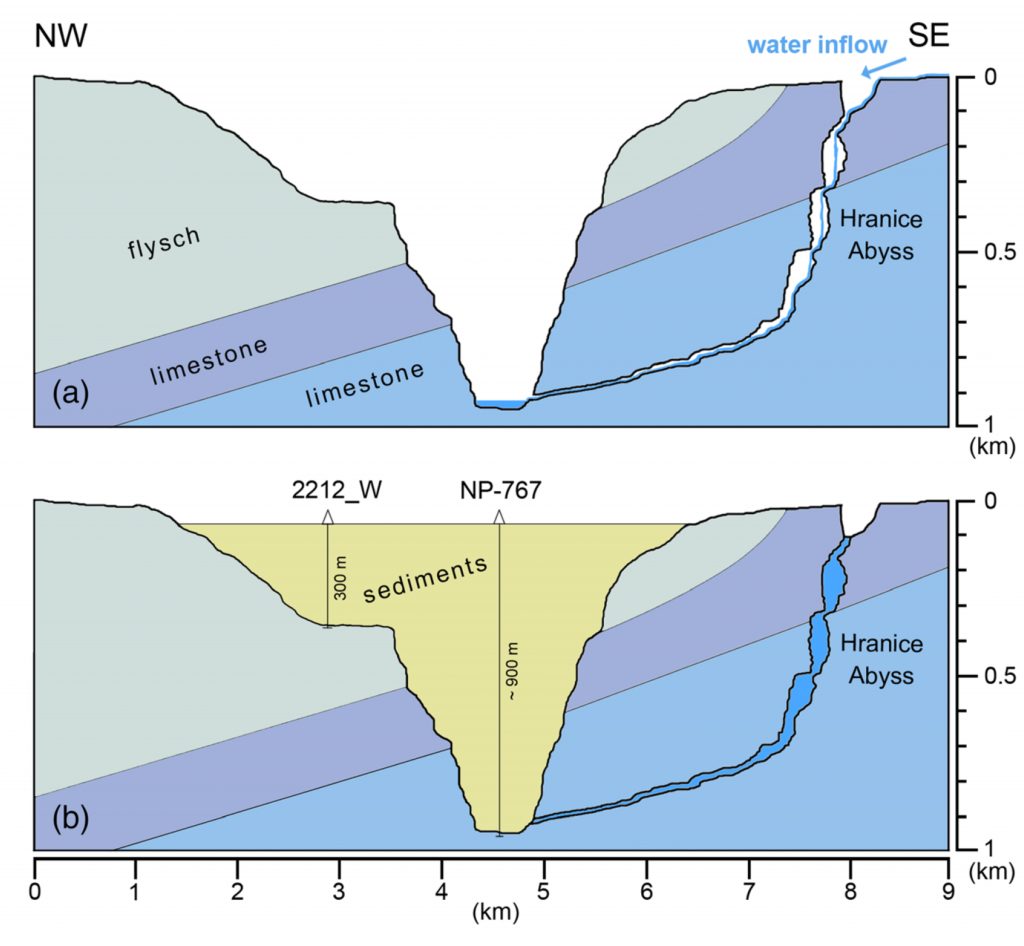 Extremely deep freshwater filled cave systems are common in karst systems globally. The origin and evolution of such caves are usually attributed to hypogenic (bottom‐up) processes, in which acidic groundwater dissolves limestone from below. A combined geophysical survey was applied to improve a subsurface image of semi-buried karst morphology in the close vicinity of Hranice Abyss (HA). Based on the results of electromagnetic surveying (AMT method), suggesting a deep disintegration of the carbonate sequence, a new possible depth of ~0.9 km of HA was estimated. An alternative hypothesis, suggesting predominantly epigenic evolution (top-down process) of the HA evolution, was introduced. Furthermore, an applicability of individual geophysical methods and their combinations has been evaluated on the basis of an integrated interpretation of geophysical data. This research attracted attention of media abroad (Science Magazine, Newsweek, Science Alert) and in the Czech Republic (Seznam, ČT24).
Extremely deep freshwater filled cave systems are common in karst systems globally. The origin and evolution of such caves are usually attributed to hypogenic (bottom‐up) processes, in which acidic groundwater dissolves limestone from below. A combined geophysical survey was applied to improve a subsurface image of semi-buried karst morphology in the close vicinity of Hranice Abyss (HA). Based on the results of electromagnetic surveying (AMT method), suggesting a deep disintegration of the carbonate sequence, a new possible depth of ~0.9 km of HA was estimated. An alternative hypothesis, suggesting predominantly epigenic evolution (top-down process) of the HA evolution, was introduced. Furthermore, an applicability of individual geophysical methods and their combinations has been evaluated on the basis of an integrated interpretation of geophysical data. This research attracted attention of media abroad (Science Magazine, Newsweek, Science Alert) and in the Czech Republic (Seznam, ČT24).
Klanica R., Kadlec J., Tábořík P., Mrlina J., Valenta J., Kováčiková S., Hill G.J. (2020): Hypogenic versus epigenic origin of deep underwater caves illustrated by the Hranice Abyss (Czech Republic) – the world’s deepest freshwater cave. Journal of Geophysical Research: Earth Surface, 125, e2020JF005663. (DOI)








